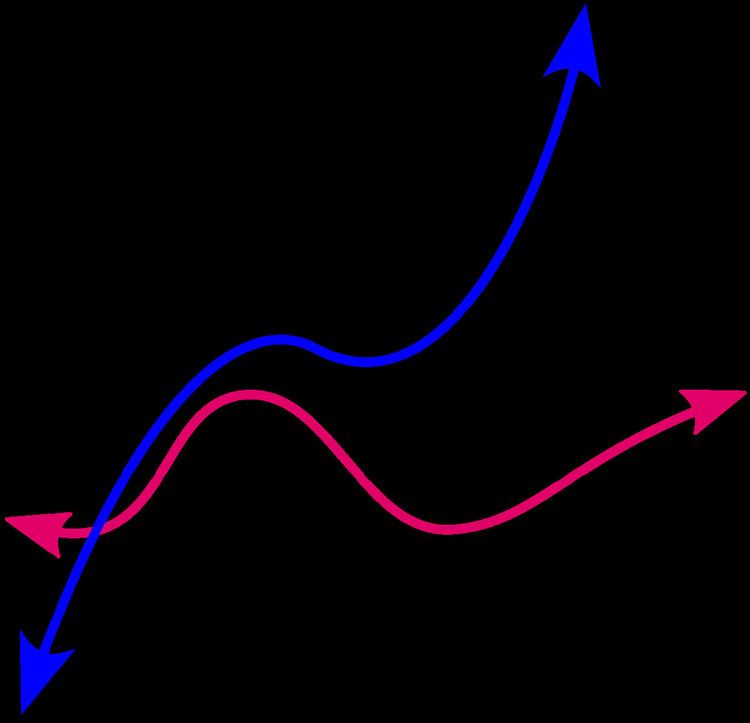 | ||
In mathematics, a function f defined on some set X with real or complex values is called bounded, if the set of its values is bounded. In other words, there exists a real number M such that
for all x in X. A function that is not bounded is said to be unbounded.
Sometimes, if f(x) ≤ A for all x in X, then the function is said to be bounded above by A. On the other hand, if f(x) ≥ B for all x in X, then the function is said to be bounded below by B.
The concept should not be confused with that of a bounded operator.
An important special case is a bounded sequence, where X is taken to be the set N of natural numbers. Thus a sequence f = (a0, a1, a2, ...) is bounded if there exists a real number M such that
for every natural number n. The set of all bounded sequences, equipped with a vector space structure, forms a sequence space.
This definition can be extended to functions taking values in a metric space Y. Such a function f defined on some set X is called bounded if for some a in Y there exists a real number M such that its distance function d ("distance") is less than M, i.e.
for all x in X.
If this is the case, there is also such an M for each other a, by the triangle inequality.
